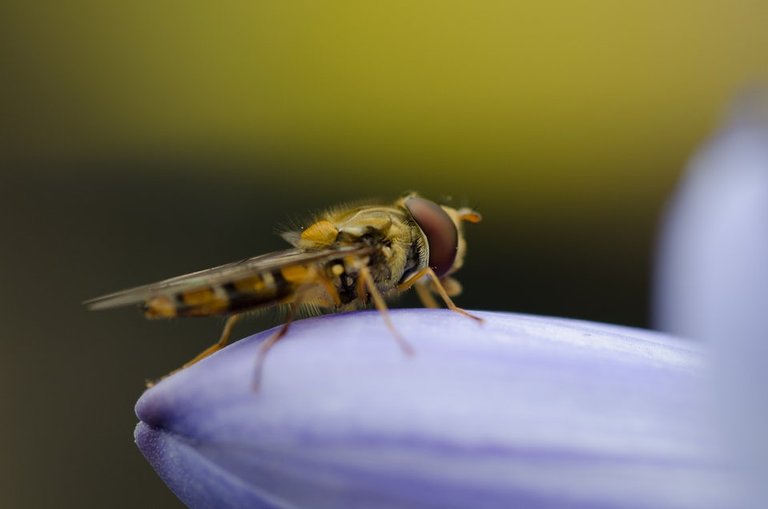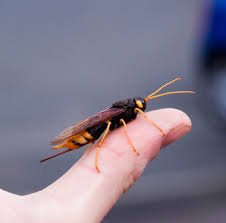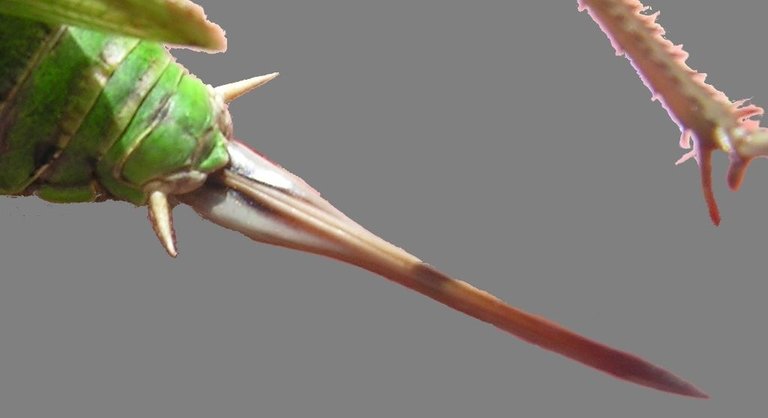Plant lice, caterpillars, beetles, scale, and flies terrorize farms and gardens. These herbivorous pests eat the plants and destroy the crop. Thankfully, if you would like to plant a nice balcony garden you can count on the neighborhood wasp.
Parasitoid and parasites
During my visit to the Urban Farm I saw they had little canisters stashed throughout the greenhouse. The tour guide explained these contain the eggs of parasitoid wasps.

You might have heard about parasites. These organisms live on or in another organism, using its nutrients at the other’s expense. The friendly version is a symbiont, which lives in symbiosis with the other organism. Symbiosis is where both the organisms mutually benefit from living together. As an example, the microorganisms in our gut (usually) live in symbiosis with our body. We provide the nutrients and they take care of the waste we can’t digest. Getting back to parasitoid wasps. Parasitoids also benefit from another organism at its expense, however, the other organism always finds an early death. In the case of our wasps, they lay their eggs on or in the bodies of other organisms, which causes the death of the hosts.
Toxic superfamilies
Many insects belong the Hymenoptera. Examples are sawflies, wasps, bees, and ants. In total the Hymenoptera contain over 146.000 different species, assuming we actually identified most of them. The parasitoid wasps comprise several superfamilies of the hymenoptera. These families are the Orussoidea, which are more commonly known as the wood wasp, and many others in the Aculeata.


Figure 1: Left, the wood wasp (Orussoidea) and, right, the giant honeybee (A. dorsata from Apidae) from the Aculeata family. – J.M. Garg
Characteristic of these insects is a special ovipositor, also known as, egg-laying organ (Fig. 2). The Hymenoptera like to place their eggs into hard to reach places, such as other organisms. The hosts that receive the eggs are often stung by the insects since their ovipositor doubles also as a stinger.

Figure 2: The Ovipositor of a Long-horned Grasshopper. - Audrius Meskauskas
Differences between the styles of parasitism of different wasps lie mostly in when in their lifetime they show the parasitoid behavior, but also the type of parasitism.
- One type is endoparasitism, which means the eggs develop inside the host while feeding nutrients of the host. During this process, the hosts stay alive and are partially paralyzed. It can only feed, grow, and moult. When the newborn wasp has reached maturity the host finally dies. This type of interaction with a host is called koinobiont.
- The second type is ectoparasitism, which is the opposite of endoparasitic; the eggs are placed on the outside of the host and the eggs develop there. This type is combined with idiobiont behavior: while the eggs are released onto the host it is also fully paralyzed. It is usual that this type of host infection is done on immobile hosts such as larva or eggs.
Conclusion
Now that we have an idea about what these wasps can do it is very understandable that they are desired by farmers as natural pest prevention. Their ability to efficiently paralyze and take kill lice, worms, beetles and other pests is a good reason to keep them close.
While I usually think wasps have a similar annoyance rating as mosquitos (mosquitos are still worse though!), I have come to appreciate them more now I know what they are capable of.
Enjoy this video about parasitoid wasps!
References:
Beneficial Insect: Parasitic Wasp
Parasitoid Wasps
Parasitic wasps facts
Venoms of the Hymenoptera: Biochemical, Pharmacological and Behavioural Aspects
Mayhew, 2007 – Why are there so many insect species?
Klopfstein et al. 2013 - The Hymenopteran Tree of Life
Idiobont
Images:
Unsplash
Urban Farming
Toilet to Tap
Bioremediation: Living CleanersRelated from @Altherion
by FoodLabScience
Twitter

A scientist’s food for thought!
excellent post
Thank you @marialara